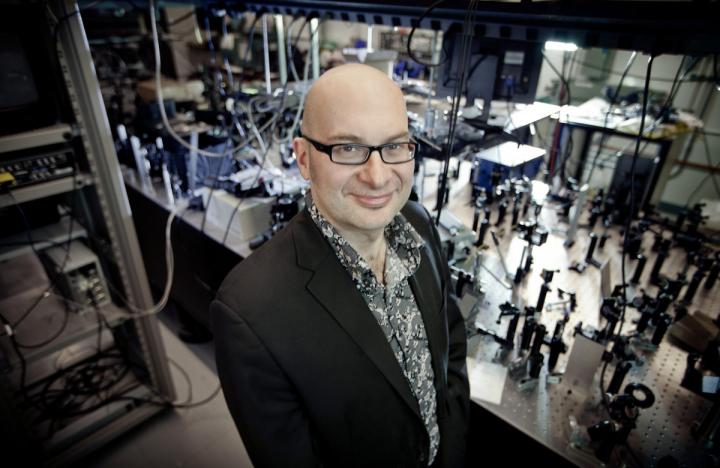An international team of researchers just introduced a new photonic processor

Credit: Christian Fleury (INRS)
An international team of researchers, including Professor Roberto Morandotti of the Institut national de la recherche scientifique (INRS), just introduced a new photonic processor that could revolutionize artificial intelligence, as reported by the prestigious journal Nature.
Artificial neural networks, layers of interconnected artificial neurons, are of great interest for machine learning tasks such as speech recognition and medical diagnosis. Actually, electronic computing hardware are nearing the limit of their capabilities, yet the demand for greater computing power is constantly growing.
Researchers turned themselves to photons instead of electrons to carry information at the speed of light. In fact, not only photons can process information much faster than electrons, but they are the basis of the current Internet, where it is important to avoid the so-called electronic bottleneck (conversion of an optical signal into an electronic signal, and vice versa).
Increased Computing Speed
The proposed optical neural network is capable of recognizing and processing large-scale data and images at ultra-high computing speeds, beyond ten trillion operations per second. Professor Morandotti, an expert in integrated photonics, explains how an optical frequency comb, a light source comprised of many equally spaced frequency modes, was integrated into a computer chip and used as a power-efficient source for optical computing.
This device performs a type of matrix-vector multiplication known as a convolution for
image-processing applications. It shows promising results for real-time massive-data machine learning tasks, such as identifying faces in cameras or pathology identification in clinical scanning applications. Their approach is scalable and trainable to much more complex networks for demanding applications such as unmanned vehicles and real-time video recognition, allowing, in a not-so-far future, a full integration with the up-and-coming Internet of Things.
###
About INRS
INRS is a university dedicated exclusively to graduate level research and training. Since its creation in 1969, INRS has played an active role in Quebec’s economic, social, and cultural development and is ranked first for research intensity in Quebec and in Canada. INRS is made up of four interdisciplinary research and training centres in Quebec City, Montreal, Laval, and Varennes, with expertise in strategic sectors: Eau Terre Environnement, Énergie Matériaux Télécommunications, Urbanisation Culture Société, and Armand-Frappier Santé Biotechnologie. The INRS community includes more than 1,400 students, postdoctoral fellows, faculty members, and staff.
Source :
Audrey-Maude Vézina
Service des communications de l’INRS
418 254-2156
[email protected]
Media Contact
Audrey-Maude Vézina
[email protected]
Related Journal Article
http://dx.




